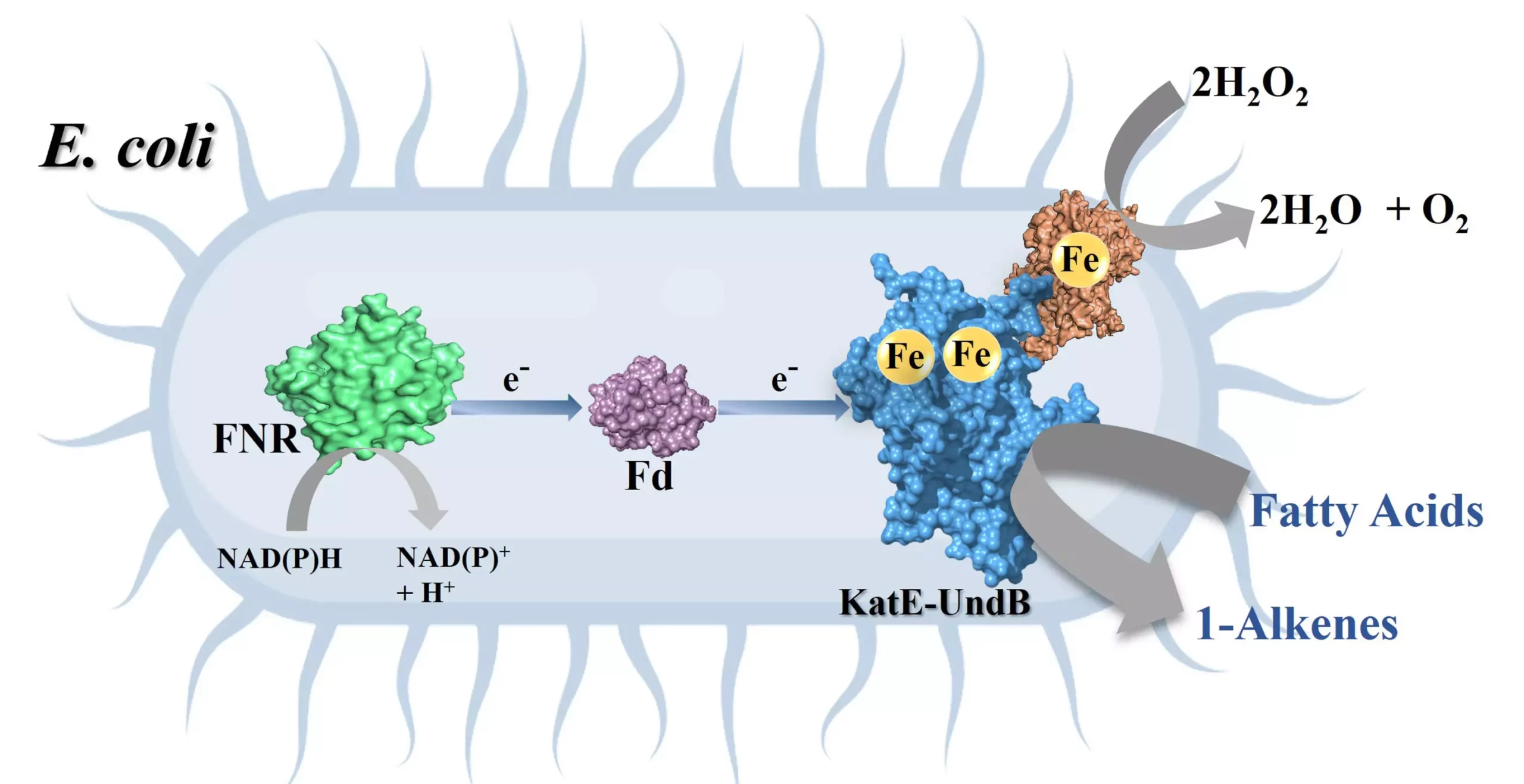In our current climate, the dire need for sustainable energy sources has never been more evident. As the harmful effects of fossil fuel consumption become increasingly clear—evidenced by climate change and environmental degradation—scientists and researchers are striving to find alternatives that can fulfill our energy needs without the detrimental side effects. Among the numerous innovations sought, hydrocarbons stand out as promising candidates. Recently, researchers from the Indian Institute of Science (IISc) have taken bold steps that could revolutionize the way we produce biofuels. Their work involves the efficient transformation of readily available fatty acids into a high-value hydrocarbon known as 1-alkene—a transformation with tremendous implications for the future of sustainable energy.
Enzymatic Advances: The Heart of the Innovation
At the center of this groundbreaking research is a focus on enzymatic processes. The IISc team has delved into the capabilities of enzymes that facilitate the conversion of simple organic compounds into more complex hydrocarbons. Historically, the conversion processes employed have faced two considerable hurdles: efficiency and byproduct formation. The enzyme UndB, previously purified and characterized by the researchers, displayed remarkable potential but succumbed to limitations due to the inactivation caused by hydrogen peroxide (H2O2), a byproduct of its activity. This realization unraveled a critical insight for future research—enhancing enzyme stability and performance is paramount to advancing biofuel production.
A Clever Solution to a Complex Problem
Rather than abandoning UndB due to its short lifespan and susceptibility to inactivation, the IISc team devised an ingenious solution: the introduction of catalase, an enzyme that degrades H2O2. This strategic addition resulted in a dramatic 19-fold increase in UndB’s activity, showcasing that carefully balancing enzymatic interactions can significantly enhance overall efficiency. By achieving an impressive output of 265 turnovers per cycle, the researchers not only revived the potential of UndB but also set a precedent for future bioengineering strategies.
In biochemical innovation, creating an artificial fusion protein that combines UndB with catalase presents a promising pathway. The E. coli bacteria, engineered to express this fusion protein, emerge as whole-cell biocatalysts capable of executing the dual enzymatic reactions. Their success in conditioning these bacteria to efficiently convert fatty acids into pure hydrocarbons marks a critical advancement in biochemistry and biofuel manufacture.
Granular Insights Into Performance Enhancements
The IISc team ventured further into optimizing their biocatalyst by investigating redox partner proteins that contribute to the efficiency of the conversion process. By discovering that ferredoxins and nicotinamide adenine dinucleotide phosphate (NADPH) provided the most effective electron shuttling, they harnessed a new layer of control over their biochemical reactions. With modifications to the engineered E. coli, the team achieved conversion rates soaring to 95%, underscoring not just the robustness of their process but also its versatility across various fatty acids.
That efficiency, coupled with the specificity of UndB yielding solely 1-alkenes as products, introduces exciting possibilities. If scaled effectively, this platform could transition into a mainstream method for producing biofuels that adhere strictly to environmental standards and fuel compatibility.
Industry Collaboration: Towards Real-World Application
While laboratory successes are critical steps in the research and development cycle, the true test lies beyond the confines of academic inquiry. With their novel hydrocarbon-producing system now patented, the IISc team is actively seeking industry partnerships to facilitate the transition towards large-scale production. The urgency to establish collaborative frameworks cannot be overstated; the potential impact on the biofuel landscape could be game-changing, opening avenues for sustainable alternatives in energy, transportation, and chemical production.
The implications of this research extend far beyond mere technological advancement. As demand for sustainable energy solutions continues to mount, innovations like those emerging from IISc remind us of a pivotal turning point. By transforming our approach to biofuels, such advancements not only promise a cleaner future but also encourage industries to rethink their operational foundations to embrace a sustainable paradigm.
In a world increasingly aware of its ecological footprints, this transformative research stands testament to human ingenuity and the relentless pursuit of solutions that marry technological possibilities with ecological responsibility. The dream of a sustainable, renewable energy future fueled by bioengineered hydrocarbons is not just a possibility—it is fast becoming a likely reality.

